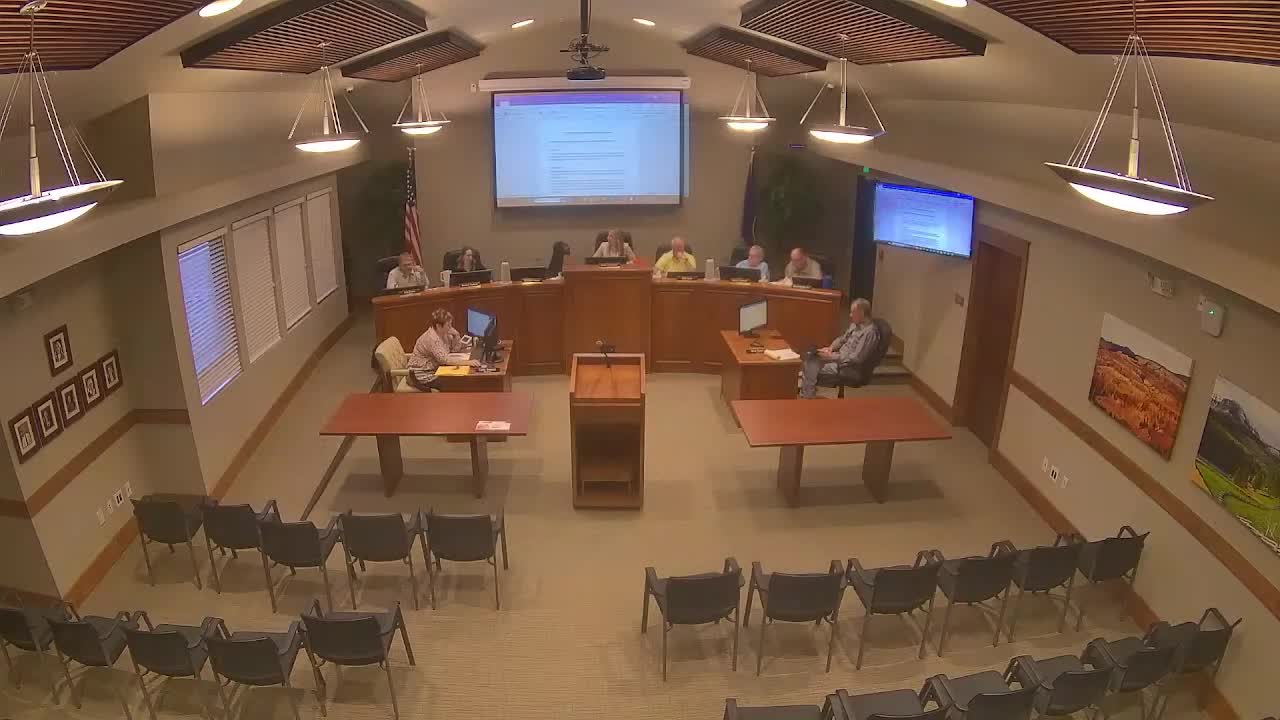Planning Commission recommends new open space requirements for residential subdivisions
August 01, 2025 | Parowan City Council, Parowan City Council, Parowan , Iron County, Utah
This article was created by AI summarizing key points discussed. AI makes mistakes, so for full details and context, please refer to the video of the full meeting. Please report any errors so we can fix them. Report an error »

In a recent Parowan City Council meeting held on July 31, 2025, significant discussions centered around new regulations for residential subdivisions, particularly focusing on open space and parkland requirements. The council is working to ensure that new developments contribute fairly to the community's recreational needs, reflecting the growing demand for accessible green spaces as the city continues to expand.
The proposed regulations stipulate that all residential subdivisions with three or more lots must dedicate land for public parks, with requirements varying based on the density of the zoning. For instance, subdivisions in the rural estates zone, characterized by larger lot sizes, are exempt from open space dedication. In contrast, higher density zones, such as R2 and R3, will require a percentage of the gross area to be set aside for open space—3% for medium density and up to 4.5% for high density developments.
The council discussed the rationale behind these varying percentages, emphasizing that denser areas necessitate more open space to accommodate the increased population and provide recreational opportunities. The Planning Commission has expressed support for this tiered approach, although some council members voiced concerns about fairness and the potential for developers to exploit loopholes by breaking larger projects into smaller phases to avoid land dedication.
A notable aspect of the meeting was the introduction of a "fee in lieu of dedication" option for subdivisions under 10 acres. This provision allows developers to pay a fee instead of dedicating land, which could streamline the process for smaller projects that may not yield usable parkland. The fee will be based on the fair market value of the land, with the city maintaining the discretion to accept or reject appraisals submitted by developers.
The council also discussed the need for a comprehensive study to establish fair market values for land across different zones, ensuring that the fees reflect current market conditions. This study is crucial for maintaining the integrity of the fee structure and ensuring that the city can effectively manage its parkland and recreational facilities.
In conclusion, the Parowan City Council's discussions on open space requirements highlight the city's proactive approach to urban planning and community development. As the city grows, these regulations aim to balance development with the preservation of public spaces, ensuring that residents have access to parks and recreational areas that enhance their quality of life. The council plans to continue refining these regulations, with further discussions anticipated in upcoming meetings.
The proposed regulations stipulate that all residential subdivisions with three or more lots must dedicate land for public parks, with requirements varying based on the density of the zoning. For instance, subdivisions in the rural estates zone, characterized by larger lot sizes, are exempt from open space dedication. In contrast, higher density zones, such as R2 and R3, will require a percentage of the gross area to be set aside for open space—3% for medium density and up to 4.5% for high density developments.
The council discussed the rationale behind these varying percentages, emphasizing that denser areas necessitate more open space to accommodate the increased population and provide recreational opportunities. The Planning Commission has expressed support for this tiered approach, although some council members voiced concerns about fairness and the potential for developers to exploit loopholes by breaking larger projects into smaller phases to avoid land dedication.
A notable aspect of the meeting was the introduction of a "fee in lieu of dedication" option for subdivisions under 10 acres. This provision allows developers to pay a fee instead of dedicating land, which could streamline the process for smaller projects that may not yield usable parkland. The fee will be based on the fair market value of the land, with the city maintaining the discretion to accept or reject appraisals submitted by developers.
The council also discussed the need for a comprehensive study to establish fair market values for land across different zones, ensuring that the fees reflect current market conditions. This study is crucial for maintaining the integrity of the fee structure and ensuring that the city can effectively manage its parkland and recreational facilities.
In conclusion, the Parowan City Council's discussions on open space requirements highlight the city's proactive approach to urban planning and community development. As the city grows, these regulations aim to balance development with the preservation of public spaces, ensuring that residents have access to parks and recreational areas that enhance their quality of life. The council plans to continue refining these regulations, with further discussions anticipated in upcoming meetings.
View full meeting
This article is based on a recent meeting—watch the full video and explore the complete transcript for deeper insights into the discussion.
View full meeting

